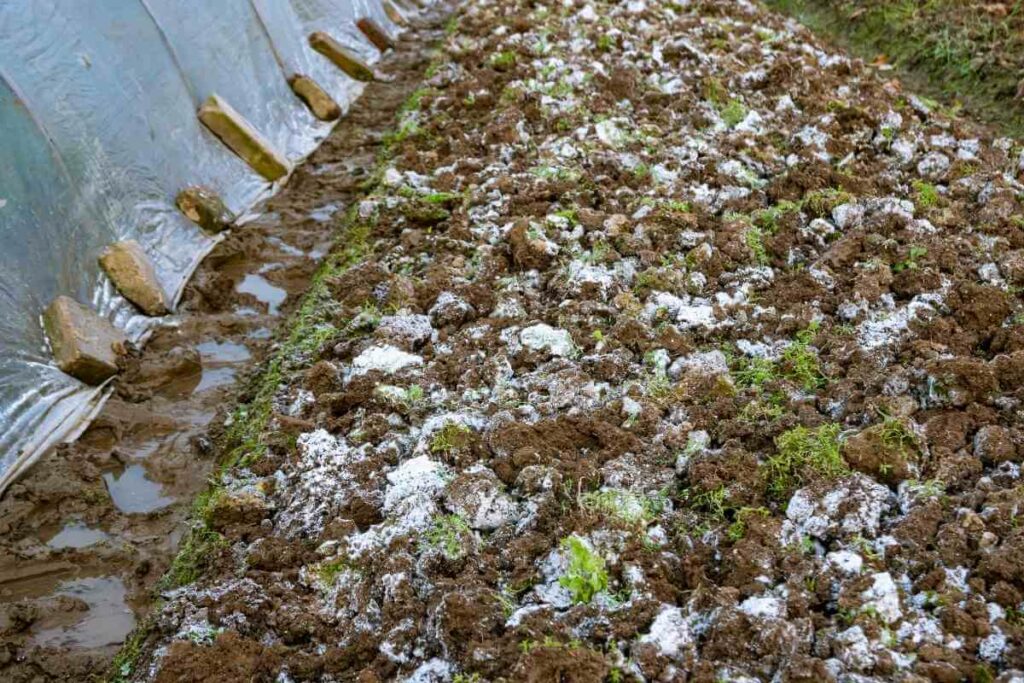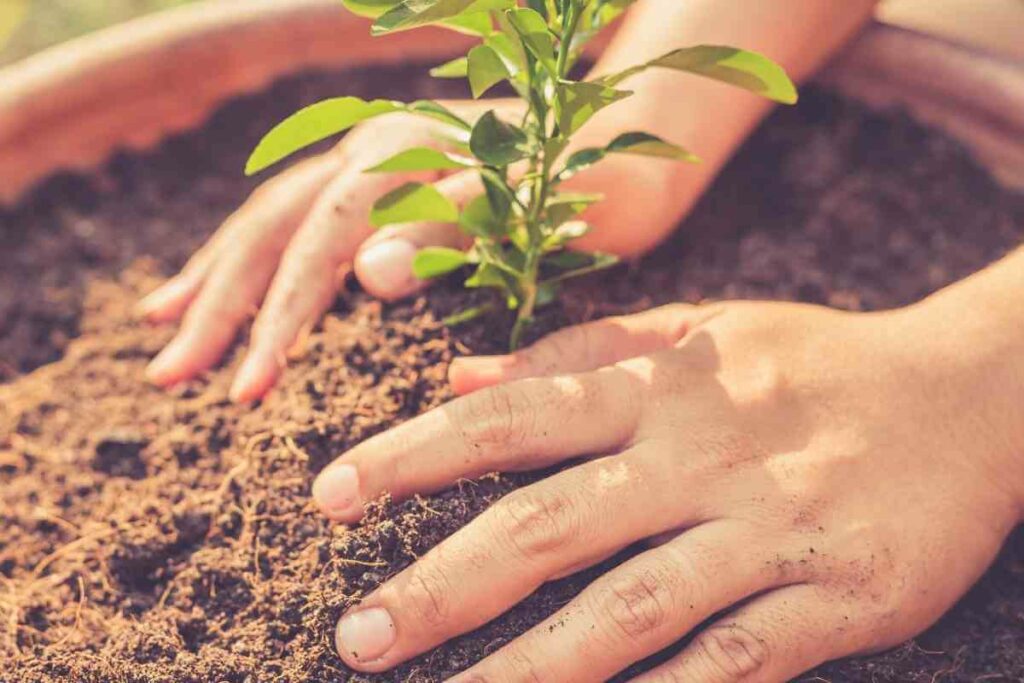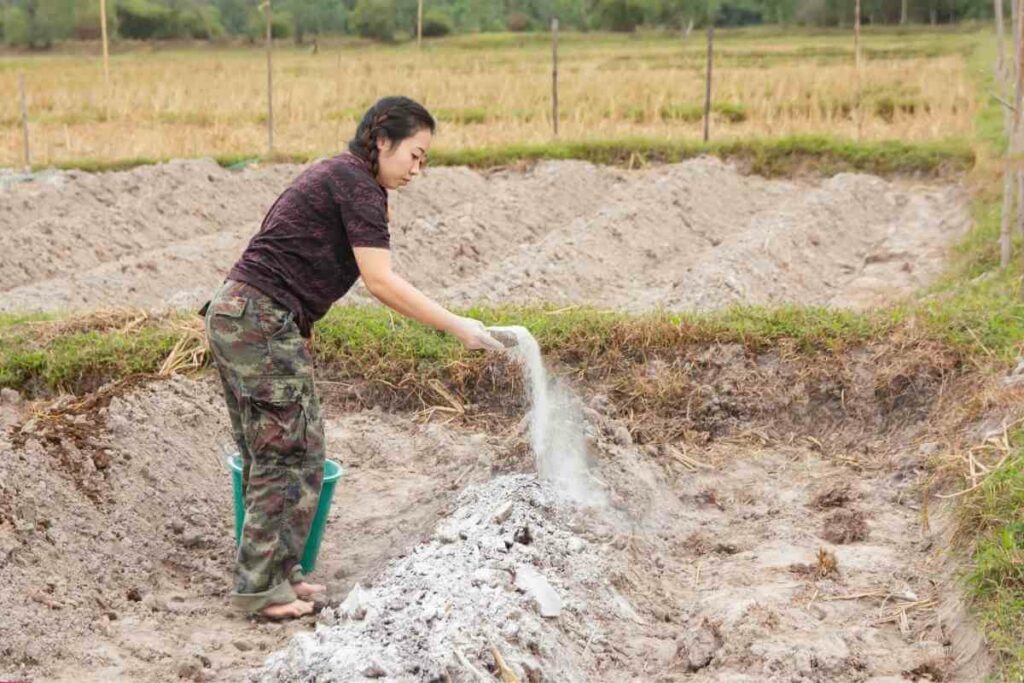The use of lime for organic gardening has been controversial for a very long time.
Some claim that the product is perfectly safe to use while others argue against its use.
In fact, the USA government prohibits commercial organic farmers from using lime.
Lime is a purely natural (organic) fertilizer. This fertilizer is added to the soil to alter soil PH so as to reduce soil acidity. Lime fertilizers can facilitate better nutrient uptake and it’s probably the most economical way to provide additions of calcium and magnesium.
Why Is Lime an Organic Fertilizer
Organic fertilizers are made of natural substances with no added chemicals.
Lime is mainly made from ground limestone rock which naturally contains calcium carbonate and magnesium carbonate.

There are other homemade liming materials like crushed eggshells or oyster shells.
They are largely composed of calcium carbonate.
Although lime contains calcium and magnesium, essential for plant growth, lime is not a substitute for fertilizer.
Key Takeaway: Lime’s role is to improve soil PH and offset soil acidity, enhancing plants’ nutrient availability, and is only applied during plowing or land preparation.
Types of Lime
Agricultural Lime
Agricultural lime is also called garden lime.
It is made from pulverized limestone or chalk.
It helps in pH improvement and adds calcium which helps crops to trace nutrients.
The soil may also benefit from additional rock dust, which also adds nutrients to the soil.
Dolomite Lime
This type of lime is similar to agricultural lime; however, it has a higher magnesium percentage.
Dolomite lime is used in organic gardening, but its application should be based on an understanding of soil pH and magnesium level.
Quick Lime and Slaked Lime
Quicklime is made by burning rock limestone in kilns.
It is highly acidic and is not supposed to be applied directly to the soil.

Water is added to it to produce slaked or dehydrated lime.
This lime is put in the garden in the hips to absorb water turning it into slaked lime.
Once it has formed slaked lime, it is now spread to the soil.
Keep In Mind: It is not advisable to use quicklime as its standards as organic fertilizer are short-lived.
How Does Lime Benefit Your Soil?
Lime tremendously improves soil quality through the neutralization of the effects of acids from nitrogen-based fertilizers.
Acidic soil has reduced pH levels and lime is instrumental in increasing soil’s pH to make it more alkaline.
When the pH of the soil is below the minimum value, it may reduce crop yields.
It is important to note that different crop species require different pH range to thrive.
Balanced soil pH will help good root development and will also improve soil structure.
Good root development helps plants trace essential elements, improving the plant’s yield.
This kind of organic fertilizer improves the major nutrients like nitrogen, phosphate, and potassium by:
- Increasing nitrogen-fixing in legumes and free-living bacteria
- Increase release of phosphate, potassium, and nitrogen from organic matter through higher microbial activity
- Releasing phosphate from iron and aluminum
- Reduce leaching, which reduces loss of potassium
Lime increases the availability of sulfur, calcium, and magnesium by:
- Reducing leaching which helps to reduce loss of calcium and magnesium
- Increase release of calcium, sulphur, and magnesium from organic matter through microbial activity.
- Supplying magnesium and calcium
- Lime also has the advantages of being used as a long-term investment;
- Lime improves root and crop development
- Building and maintaining soil structure
- Inhibiting the movement and transportation of heavy metals
- Support organic matter build-up
- Lime neutralizes acidification
- Maximizes efficiency from fertilizers and agrochemicals
- Release soil nutrient reserves
- Inhibits activity and transport of heavy metals
- Minimizing nutrient loss from leaching
How Much Lime Does Soil Need
The amount of the fertilizer depends on the pH of the soil and its consistency.
There must be a proper soil test because you cannot judge the amount of lime you need to use in the field.
When applying lime, using a home pH test kit is not advisable because it doesn’t measure the type of soil but the only amount of acidity.
To get an accurate soil test, the testing should be done by professionals.
Their report will also include the recommendations to be applied to meet the need of your soil.
Check the pH of the soil and if zero- to 3-inch soil depth is below 5.5, topdress at a rate of 25 to 50 pounds (9-23 k) of ground limestone per 1000 square feet (93 m2).
Good to Know: When establishing a lawn, you are required to test the soil and apply the recommended rate and mix it with the soil. Too much acidity or heavy clay may need as much as 100 pounds (46 k) per 1000 square feet.
How And When to Apply Lime
Once the soil is tested, you can then approximate the amount of lime you can use.
A particular section of your land may be acidic than the other, so it is advisable to test it throughout the field.
A specific plan of the lime application is created to make sure you do not over or undersupply lime across the area.
Certain crops may vary with the lime amount they should use, depending on their requirement.
Lime is applied to the acidic areas of your garden at least six months before planting another crop.
The application may be done earlier or maybe later, depending on how you practice your lime application.
It is important to apply the lime deeper into the soil as much as possible. If applied close to the surface, it may take longer to be dissolved and may not help the plant and the soil.
However, plants whose roots do not go deeper into the soil and feed close to the surface may not be affected, but tilling should be done.
There are seven sign you know that your garden needs lime.
That is when:
- Grass in the land becomes yellowish.
- There is lots of weed in the land. Weed thrive in acidic soil.
- Application of fertilizers does help your crops effectively
- Moss growing at the base of the trees and stretching towards the main positions of your land.
- Your land is sandy or clay soil, they will need application of lime from time to time.
- The rainfall is excess, you will need to add lime as water naturally pulls calcium and magnesium from the soil.
- Your land becomes poor in drought recovery.
Plants That Mainly Benefit from Lime
When you are growing a vegetable garden, plants that are very likely to benefit from lime include legumes such as broad beans and peas.

English spinach, celery, daffodils, lettuce, onions, garlic parsnips, and asparagus are also other leafy vegetables that will improve with lime.
Some plants don’t like lime including:
- potatoes
- rhododendrons
- ericas
- blueberries
- camellias
- and azaleas
Final Thoughts
Lime is an organic fertilizer; however, it should not be used as a substitute for fertilizers.
Lime is mainly used to improve the pH of the soil and reduce acidity. Lime is also necessary to your garden because it contains nutrients like calcium and magnesium.
Lime is applied during the land preparation or tilling but not when you have already planted.


